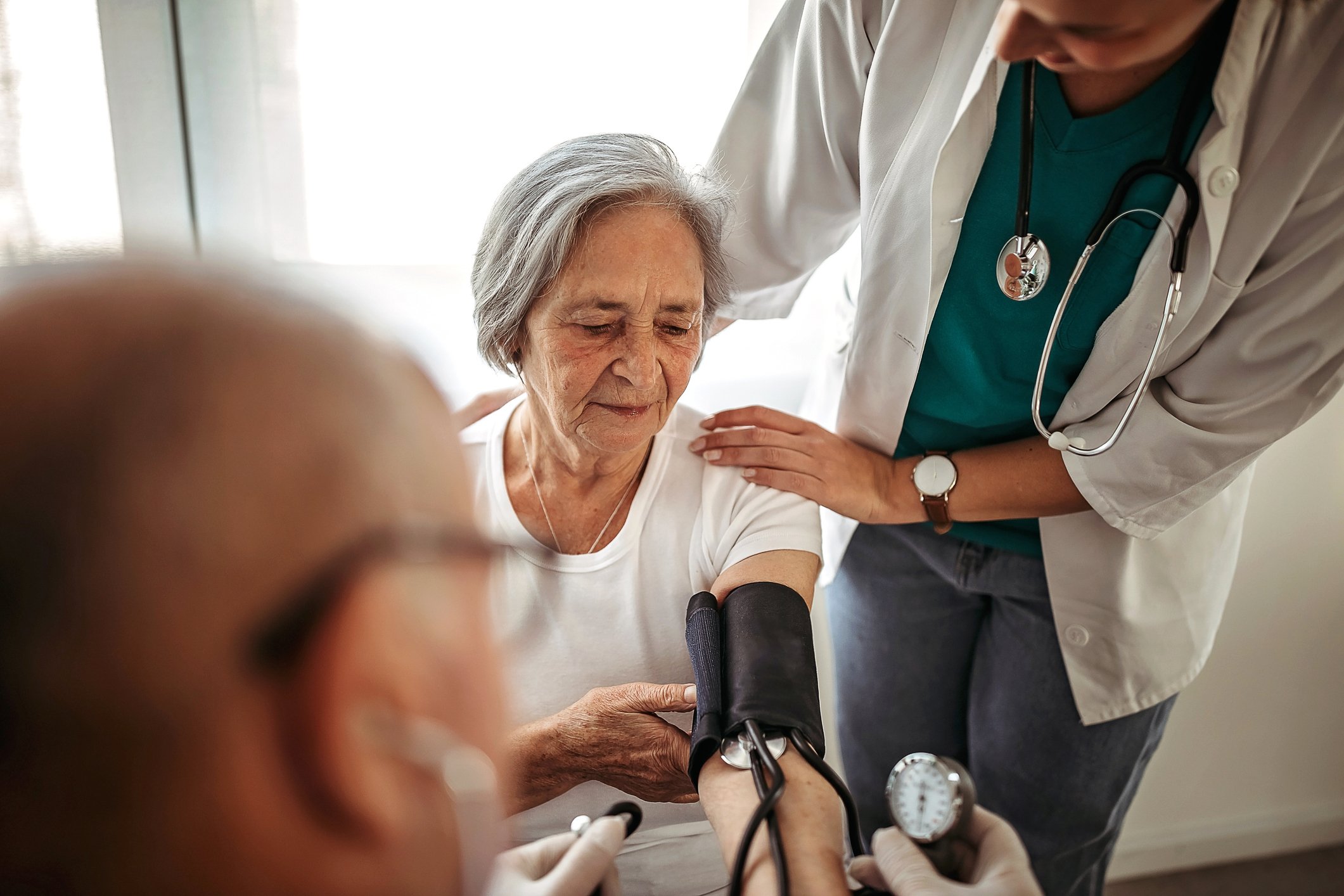Pembrolizumab returned to the international stage of lung cancer therapy with a thunderclap during the presentation of the KEYNOTE 024 trial at the 2016 ESMO Congress in Copenhagen. Lectures on the subject were so well attended that extra rooms had to be made available spontaneously. Since October, the antibody has therefore been the subject of much discussion among experts: Compared to platinum-based chemotherapy, it prolonged both progression-free and overall survival in the first line (this is the new aspect), with fewer side effects. In addition, there was important news in breast cancer, which was reconfirmed for the Asian population at ESMO ASIA in Singapore at the end of the year.
Pembrolizumab, a humanized monoclonal antibody, blocks the interaction between the immune checkpoint receptor PD-1 and its ligands PD-L1/-L2. These ligands are overexpressed in certain tumors. Via the PD1 signaling pathway, they ensure that T cells are restricted in their activity and proliferation or that the body’s own antitumor immune response is weakened. Pembrolizumab is currently being investigated in multiple indications. However, the compound has been the talk of the town since the presentation of the KEYNOTE 024 study at the ESMO Congress in 2016. In the meantime – more precisely in November – the study has been published in the New England Journal of Medicine [1]. A brief recap of the results.
An exceedingly clear benefit
In the phase III open-label study, 305 patients with previously untreated advanced non-small cell lung cancer (NSCLC) without EGFR or ALK mutation or translocation, but with PD-L1 expression on at least half of the tumor cells, were divided into two groups: One received pembrolizumab at a fixed dose of 200 mg every three weeks, and the other received platinum-based chemotherapy, which was deemed most appropriate by the investigator. In case of progression, cross-over to the pembrolizumab group was possible.
Based on the positive results, the study was stopped early:
- In the primary endpoint, progression-free survival (PFS), there was a significant and marked risk reduction of 50% with the use of the antibody (hazard ratio 0.50; 95% CI 0.37-0.68; p<0.001). This corresponded to a PFS of 10.3 versus 6 months.
- In one of the secondary endpoints, overall survival, there was a similarly significant risk reduction of 40% (also significant) – this despite a high cross-over rate of 50%. At six months, survival was 80.2% versus 72.4%, and at one year, survival was 70% versus 54%.
- Other endpoints also reflected the benefit, with a response rate of 44.8% versus 27.8%. On average, response lasted longer and treatment-associated adverse events of any degree were less frequent (73.4% versus 90%). This was also true when the higher-grade (i.e., grades 3-5) were considered separately (26.6% vs. 53.3%).
A change of power announces itself
For years, platinum-based chemotherapy was the standard of care for NSCLC. Targeted therapies have partially broken this supremacy, but only in patients with oncogenic driver mutations (such as EGFR and ALK). Here, new therapeutics are already prominent in the first-line setting. However, in a large proportion of patients, they are not an option due to the absence of mutations, which is why chemotherapy remains an important mainstay.
So how to deal with the new results on pembrolizumab? After the impressive presentation of the data at the ESMO congress, many voices were already in favor of immunotherapy now advancing to the first-line setting. With a very good response rate of 45%, better survival and safety profile, it is time for a new standard, he said. The benefit in overall survival in particular is surprising and extremely relevant; up to now, new substances in the first line have scored mainly in PFS.
Who benefits?
What is certain is that not all patients will receive pembrolizumab in the first-line setting. Finally, the sample from KEYNOTE 024 with PD-L1 expression of ≥50% accounted for approximately “only” one third of the total screened population. In addition, patients with brain metastases, on steroids, or with autoimmune diseases were excluded. Is the number of affected individuals for whom pembrolizumab may be considered thus “only” just 10% of cases in clinical practice, as some experts have suggested? In any case, other patients benefit from immunotherapy as from targeted therapy, as shown by the study sample, which differs from studies with targeted substances: KEYNOTE 024 included mainly men, current or former smokers, and a good 20% had squamous cell carcinoma.
Thus, it becomes important to test all patients for PD-L1 expression along with mutation analysis to rapidly allocate first-line therapy. Perhaps more and more patients will be spared chemotherapy.
Cost-wise, first-line immunotherapy could potentially eliminate some supportive care that would be needed with chemotherapy. Does this perhaps somewhat offset the high price of pembrolizumab on the balance sheet?
MONALEESA-2: the CDK4/6 inhibitors on the test bench
In last year’s issue of InFo ONCOLOGY & HEMATOLOGY, we already reported on the positive results of the MONALEESA-2 study. Meanwhile, the data have also been published in NEJM [2]. Recall the PFS rates of 63% versus 42.2% (at 18 months), which persisted for a significantly longer duration (hazard ratio of 0.56), and the significantly better response of 52.7% versus 37.1%. The investigational agent ribociclib was co-administered with letrozole and compared with placebo plus letrozole in the first-line setting in 668 postmenopausal women with hormone receptor-positive (HR+) and HER2-negative (HER2-) recurrent or metastatic breast cancer.
Ribociclib is a CDK4/6 inhibitor. It thus belongs to a “booming” class of active ingredients that is currently being intensively tested in clinical trials and from which experts expect much. It is hoped that there will be an earlier and broader benefit compared to current endocrine therapy. In general, the results are indeed encouraging. A substance of this type has already been approved in the USA. However, questions remain about long-term effects and the associated safety profile.
The Asian population also benefits
At ESMO in Copenhagen, one of the issues was exactly which patients would benefit from ribociclib. One ethnic subgroup, Asian, has since been studied in more detail – initial data was available at ESMO ASIA 2016. This is a predefined subgroup analysis of MONALEESA-2.
To start with, the Asian group did equally well compared to the Western group in terms of progression-free survival. The analysis was therefore positively received by the visitors – it consolidates the prevailing opinion on the benefit of CDK4/6 inhibition in advanced breast cancer. The question is: Is this pathway a possible answer to the resistance to endocrine therapy that occurs at some point in most women?
Overall, a good 23% of all breast cancer cases are diagnosed in Asia, making the group a relevant subject of study. So it was no coincidence that the analysis was placed as the first late-breaking abstract of the congress.
68 Asian female patients participated in MONALEESA-2, constituting 10% of the total population. PFS was again significantly prolonged by the addition of ribociclib, with a hazard ratio of 0.298 (95% CI 0.134-0.662). 26% in the ribociclib versus 64% in the placebo group discontinued treatment, mostly due to progressive disease, although in 3% of cases also due to side effects (in the verum arm).
Overall, the authors concluded that the investigational agent together with letrozole was able to prolong progression-free survival compared with treatment with the aromatase inhibitor alone, even in the Asian subgroup, again with an acceptable safety profile.
Source: ESMO, October 7-11, 2016, Copenhagen; ESMO ASIA, December 16-19, 2016, Singapore.
Literature:
- Reck M, et al: Pembrolizumab versus chemotherapy for PD-L1-positive non-small-cell lung cancer. N Engl J Med 2016; 375: 1823-1833.
- Hortobagyi GN, et al: Ribociclib as First-Line Therapy for HR-Positive, Advanced Breast Cancer. N Engl J Med 2016; 375: 1738-1748.
InFo ONCOLOGY & HEMATOLOGY 2017; 5(1): 34-36.












